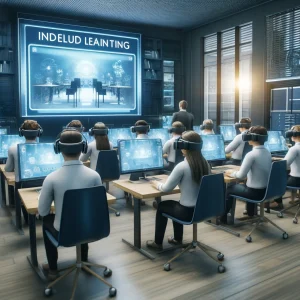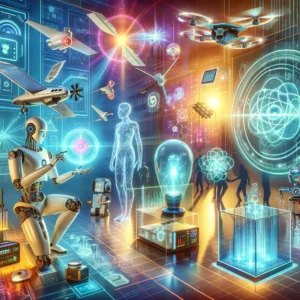How VR Is Being Used in Training and Education

How VR Is Being Used in Training and Education.
Explore how VR is transforming training and education. Learn about its applications, benefits, and future prospects in creating immersive and engaging learning experiences.
Virtual Reality (VR) is no longer just a futuristic concept; it has become an integral part of training and education. By offering immersive, interactive, and engaging experiences, VR has revolutionized the way learners acquire knowledge and skills. From medical training to virtual classrooms, VR is transforming traditional methods and preparing individuals for the demands of the modern world.
—
What Is Virtual Reality?
Virtual Reality (VR) uses computer-generated environments to simulate real-world experiences. Through VR headsets, users are transported into a 3D world where they can interact with objects, scenarios, and simulations in a lifelike manner. This technology bridges the gap between theoretical learning and practical application.
READ ALSO: Exploring the World of NFTs: A Beginner’s Guide.
—
Benefits of Using VR in Training and Education
1. Immersive Learning
VR creates a fully immersive environment, allowing learners to experience real-world scenarios without the associated risks. This is especially beneficial for fields like aviation, healthcare, and engineering.
2. Enhanced Engagement
The interactive nature of VR keeps learners engaged. Unlike traditional lectures or textbooks, VR captivates attention through hands-on activities and visual storytelling.
3. Safe Practice
In industries like medicine or construction, VR allows trainees to practice procedures and operations in a controlled, risk-free environment.
4. Personalized Learning
VR platforms can adapt to individual learning speeds and styles, providing a customized experience that improves knowledge retention.
5. Global Accessibility
VR eliminates geographical barriers, enabling students from remote areas to access quality education and training programs.
—
Applications of VR in Training and Education
1. Medical Training
VR is used to simulate surgeries, anatomy lessons, and emergency response scenarios. For instance:
Surgical Training: Surgeons can practice complex procedures without the need for live patients.
Therapeutic Interventions: VR is used for physical therapy and mental health treatments, such as exposure therapy for anxiety.
2. Corporate Training
Many companies use VR for onboarding, skill development, and leadership training. Examples include:
Team Building Activities: Interactive scenarios that enhance collaboration skills.
Diversity Training: Simulated experiences that promote empathy and inclusivity.
3. Military and Defense
The military uses VR for combat training, vehicle simulations, and disaster response drills. Soldiers can practice tactics and strategies in realistic battlefields.
4. Education
VR transforms traditional classrooms into interactive learning environments. Examples include:
Virtual Field Trips: Students explore historical sites, outer space, or ocean depths without leaving their classrooms.
STEM Learning: Interactive experiments and simulations in science, technology, engineering, and mathematics.
5. Aviation and Transportation
Pilots and drivers use VR simulators to practice navigation, safety procedures, and emergency responses.
6. Architecture and Design
Students and professionals can create and explore 3D models of buildings and landscapes, gaining a comprehensive understanding of spatial dynamics.
—
Challenges of Using VR in Education
1. High Costs
The initial investment in VR hardware and software can be expensive, making it less accessible for some institutions.
2. Technical Limitations
Issues like low resolution, latency, and limited battery life in VR devices can hinder the user experience.
3. Health Concerns
Prolonged use of VR may lead to issues like eye strain, motion sickness, or fatigue.
4. Lack of Content
The development of high-quality, curriculum-aligned VR content remains a challenge.
—
The Future of VR in Training and Education
The adoption of VR is expected to grow as technology becomes more affordable and accessible. Innovations like augmented reality (AR) integration, AI-driven personalization, and improved hardware will further enhance the effectiveness of VR in education.
—
How to Implement VR in Your Institution
1. Start Small
Begin with pilot projects to gauge effectiveness and gather feedback.
2. Invest in Quality Hardware
Choose VR devices with high resolution, low latency, and user-friendly interfaces.
3. Develop Custom Content
Work with developers to create VR modules tailored to your curriculum or training needs.
4. Provide Training for Educators
Ensure teachers and trainers are well-versed in using VR tools to maximize their potential.
—
Conclusion
Virtual Reality is reshaping the landscape of training and education. By offering immersive, engaging, and personalized experiences, VR equips learners with the skills and knowledge needed for the modern world. While challenges remain, the potential benefits far outweigh the limitations, making VR a game-changer in education.





